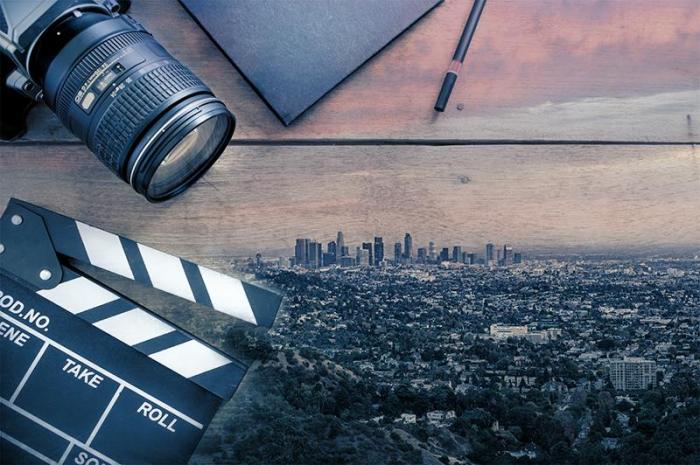Understanding rules regarding filming in public is crucial for any filmmaker, whether you’re shooting a personal project or a professional production. Public spaces offer incredible opportunities for visual storytelling, but navigating the legal landscape can be tricky. This guide dives into the essential regulations, permits, and responsibilities surrounding filming in public areas, from parks and streets to beaches and public transportation.
We’ll explore the scope of filming regulations, covering different types of public spaces and the distinctions between personal and commercial filming. We’ll also look at the process of obtaining permits, the rights and responsibilities of filmmakers, and unique considerations for filming during specific events. Finally, we’ll touch on international perspectives and offer helpful resources for further research.
Scope of Public Filming Regulations

Filming in public spaces is a common activity, yet it’s crucial to understand the legal framework governing these actions. Navigating these regulations ensures responsible use of public spaces and avoids potential conflicts. Misunderstandings can lead to fines or even legal repercussions, so it’s essential to be informed. This section dives into the details of public filming regulations, clarifying the differences between personal and commercial use, and how various public spaces impact these regulations.
Public Space Classifications and Restrictions
Public spaces encompass diverse environments, from bustling city streets to serene parks. The legal framework governing filming often varies based on the type of space. This difference stems from the potential impact filming has on public order, safety, and the experience of other users.
- Parks and Recreational Areas: Filming in parks often requires permits, especially for commercial purposes. Permits may be required for large-scale events or gatherings. Exceptions may exist for events with pre-approved permits, such as weddings or community festivals. Regulations typically address noise levels, equipment use, and minimizing disruption to park-goers.
- Streets and Public Thoroughfares: Filming on streets is often subject to restrictions due to the potential impact on traffic flow and pedestrian safety. Blocking traffic or creating obstructions may be prohibited. Filming during official events or for news reporting is often exempt, provided it adheres to safety protocols and does not hinder public movement.
- Beaches and Coastal Areas: Filming regulations on beaches can vary based on time of day, location, and intended use. Restrictions might be in place to prevent disturbance during peak hours or to maintain order during popular events. Personal use photography and videography is often permitted, but larger-scale commercial shoots may require permits.
- Public Transportation: Recording passengers on public transportation is often restricted to prevent privacy violations and maintain order within the vehicles. Official documentation, such as reporting incidents or documenting safety procedures, is an exception to these rules. These regulations protect individuals’ privacy and maintain the operational efficiency of public transport.
Personal vs. Commercial Filming
The distinction between filming for personal use and commercial purposes significantly impacts the legal landscape. Personal use, typically for hobby or family documentation, is often subject to less stringent regulations. Commercial filming, for advertising, documentaries, or other professional purposes, frequently requires more extensive permissions and adheres to a more complex framework.
Impact of Events and Gatherings
Major events or gatherings in public spaces can influence filming permissions. Permits for filming may be required or specific filming restrictions may be put in place to avoid disrupting the event or impacting safety measures. Filmed content is usually subject to specific limitations to protect participants and the smooth flow of the event.
Table of Public Spaces and Filming Restrictions
Permits and Approvals
Navigating the world of public filming often requires securing permits and approvals, a crucial step to ensure smooth operations and compliance with local regulations. Understanding the permit process is essential for filmmakers, ensuring they can execute their projects without legal repercussions or unnecessary delays. Obtaining these permits involves a multifaceted approach, varying based on location and the scale of the production.The process of obtaining filming permits is not a one-size-fits-all approach.
Different locations have unique regulations, requiring specific documentation and procedures. This complexity necessitates meticulous research and adherence to the guidelines established by the authorities in charge of public spaces. This section will delve into the nuances of securing filming permits, exploring the requirements, procedures, and potential challenges associated with various production types.
Permit Acquisition Process
Filmmakers must meticulously research and understand the specific regulations for each filming location. Regulations often vary by jurisdiction and are designed to balance public access with the need for filming. The documentation needed for a permit application can be extensive, covering aspects like production details, insurance information, and safety protocols. This detailed information ensures the smooth execution of filming while maintaining the safety and well-being of the public and the crew.
Documentation Requirements
The necessary documentation for filming permits varies depending on the nature of the production and the location. For short-form productions, the application might require a concise overview of the project, including a synopsis, location details, and estimated filming duration. Longer-form productions, such as feature films or documentaries, require more comprehensive documentation, such as detailed schedules, crew lists, and safety plans.
Insurance information, demonstrating liability coverage, is a crucial aspect of virtually all permit applications. Precise details regarding the insurance coverage amount and policy numbers must be clearly specified. Furthermore, permits often demand a description of the proposed filming activity, including specific times and locations within the public space.
Comparing Short-Form and Long-Form Permits
Short-form productions, like commercials or music videos, typically require less extensive documentation and have faster processing times compared to long-form productions. Short-form productions frequently benefit from streamlined approval procedures, often handled by local authorities with specific departments dedicated to reviewing such requests. In contrast, long-form productions demand thorough documentation, often necessitating detailed plans, schedules, and risk assessments. This thorough documentation is essential for ensuring the safety and smooth progress of the larger production.
This also typically involves more complex review processes and a larger number of parties involved in the approval process.
Fees and Timelines
Permit fees and processing timelines can vary significantly based on the location and the type of production. Some locations might charge a flat fee for all permits, while others might assess fees based on the duration of filming or the size of the crew. Anticipating these potential costs and processing times is essential for effective project planning. Real-world examples demonstrate how variations in fees and timelines can impact production budgets and schedules.
Understanding these factors in advance allows for realistic budgeting and scheduling considerations.
Steps for Obtaining Public Filming Permits
| Step | Description |
|---|---|
| 1 | Identify the location and intended use. |
| 2 | Research specific regulations for that area. This includes understanding the permitted filming hours, required safety measures, and potential restrictions on public access. |
| 3 | Complete and submit the application, ensuring all required documentation is included and accurate. |
| 4 | Await approval or denial. This step can vary significantly in duration, from a few days to several weeks, depending on the location and the complexity of the application. |
| 5 | Comply with conditions of approval. This may involve adhering to specific filming hours, providing necessary safety measures, or ensuring public access is maintained to the extent permitted. |
Rights and Responsibilities of Filmers: Understanding Rules Regarding Filming In Public
Public filming, while a valuable tool for documentation and storytelling, comes with specific rights and responsibilities. Understanding these ensures both the filmmaker’s creative freedom and the safety and well-being of the public. This section delves into the legal and ethical considerations surrounding public filming.Filming in public spaces is often a balance between capturing moments and respecting the rights of those being filmed.
This balance necessitates an understanding of both the rights of the filmmaker and the responsibilities they carry.
Rights of Individuals to Film in Public Spaces
Public spaces, by their nature, are open to observation and recording. Individuals generally have the right to film in public areas, subject to limitations and regulations. These rights are not absolute and can be restricted in certain circumstances, such as in areas with specific prohibitions or where filming could impede public order or safety. Specific laws and regulations vary by jurisdiction and should be thoroughly researched before engaging in filming activities.
Responsibilities of Filmmakers Regarding Public Safety and Order
Filmmakers have a responsibility to maintain public order and safety during their filming activities. This includes adhering to any applicable filming regulations, avoiding disruption to traffic flow or public events, and being mindful of the potential impact of their filming on bystanders. Care must be taken to avoid actions that could create hazards or inconvenience to the public.
Legal Implications of Violating Filming Regulations
Violating public filming regulations can lead to penalties, fines, or even legal action. The specific consequences vary depending on the nature of the violation, the jurisdiction, and the specific regulations in place. Failure to obtain necessary permits or adhere to time restrictions can result in severe repercussions. Thorough research into local regulations is crucial to avoid potential legal issues.
Consequences of Filming Without Proper Authorization
Filming without proper authorization can lead to various consequences. This includes fines, the removal of footage, or even legal action depending on the specific jurisdiction and the nature of the violation. It is crucial to familiarize oneself with local laws and obtain the required permits before commencing filming activities. Consequences can vary widely and should be carefully considered before initiating filming.
Knowing the rules for filming in public can be tricky, especially when you’re trying to capture that perfect shot. It’s important to understand what’s permitted and what might get you into trouble, like, say, using skullconduct biometric password authentication to bypass security protocols for recording purposes. Ultimately, respecting those rules is key to getting great footage and avoiding any legal headaches.
Respecting the Privacy of Individuals Captured in the Footage, Understanding rules regarding filming in public
Capturing images or videos of individuals in public spaces necessitates a mindful approach to their privacy. Recognizing that individuals may not want to be filmed, even in a public space, is paramount. Taking steps to avoid capturing images of individuals without their consent is crucial. The use of sensitive footage needs careful consideration and ethical judgment.
Figuring out the rules for filming in public can be tricky, especially when you’re trying to capture that perfect shot. It’s important to understand the local regulations, as they vary greatly, even between seemingly similar areas. For example, you might find that companies like Xiaomi and Vivo, as reported in this recent news piece about xiaomi vivo suspending its product launches india , are having to navigate these sorts of rules in their marketing efforts.
Knowing these rules helps you avoid any potential issues and ensures your filming stays within the boundaries of what’s permitted.
Obtaining Consent for Filming People
“Filming individuals without their consent can lead to legal complications and damage relationships with the public.”
Obtaining consent is essential when filming individuals, especially in situations where their image or likeness might be used for commercial purposes or in a way that could be considered intrusive. Consent should be explicit, ideally in writing, and clearly Artikel the intended use of the footage. Explicit consent avoids potential legal disputes and maintains respectful relations with the public.
Filming Specific Situations

Navigating the world of public filming requires understanding the nuances of various situations. Different locations, events, and circumstances come with their own sets of rules. This section will delve into the specific regulations for filming during public events, in restricted-access areas, and during sensitive activities.
Filming During Public Events
Public events, from festivals to demonstrations, often involve unique considerations for filming. These events typically attract large crowds and require special attention to regulations. Understanding these regulations is crucial to avoid conflicts and ensure smooth operations.
Navigating the rules around filming in public can be tricky, especially with new technologies emerging. It’s important to know local regulations, as laws vary greatly. This is especially crucial when considering the growing concerns surrounding AI’s impact on various sectors, such as the increasing scrutiny of AI development by antitrust watchdogs around the globe, like this recent surge in interest.
Understanding these evolving regulations helps ensure your creative projects remain compliant and avoid potential legal issues.
- Public Demonstrations: Filming during protests or demonstrations requires sensitivity. These events can be volatile, and filming must respect the rights of all participants. Often, specific permits or restrictions apply to filming within designated zones or close to participants. The safety of everyone involved is paramount.
- Concerts and Performances: Filming at concerts and performances necessitates adherence to venue policies and noise ordinances. In many cases, specific areas may be designated as filming zones, or there may be prohibitions on certain types of filming equipment or techniques to avoid disrupting the performance or safety of the audience.
- Festivals: Festivals, like music festivals or cultural events, have their own unique regulations regarding filming. Permits may be required, and specific areas may be restricted. Respecting the atmosphere and regulations of the festival is key to avoiding problems.
Filming in Restricted-Access Areas
Certain areas, such as government buildings or military bases, often have strict regulations regarding filming due to security or privacy concerns. These restrictions may prohibit filming entirely or mandate specific procedures for obtaining permissions. Disregarding these rules can have serious consequences.
- Security Protocols: Areas with active security protocols, like airports or government facilities, often have very specific guidelines about photography and videography. These protocols usually involve obtaining prior authorization and adhering to specific guidelines concerning equipment and techniques.
- Restricted Access Zones: Filming within restricted access zones, including those around sensitive installations or events, requires adherence to strict rules and regulations. Often, permission is required from the relevant authorities.
Filming During Sensitive Activities
Filming in areas considered sensitive, such as historical landmarks or religious sites, requires a heightened level of awareness and respect. These locations often have specific guidelines about photography and videography, including restrictions on close-ups or disruptive techniques.
- Historical Landmarks: Filming at historical landmarks should be done in a way that doesn’t impede visitors or damage the site. Often, guidelines exist about maintaining a respectful distance and refraining from actions that could harm the structure.
- Religious Sites: Respecting the sanctity of religious sites is essential. Filming should be carried out discreetly and avoid any actions that might be considered disrespectful or disruptive to the site’s rituals or practices.
Considerations for Filming During Special Events
A table summarizing key considerations for filming during various special events:
| Event Type | Considerations |
|---|---|
| Public demonstrations | Potential for conflicts, need for permits, adherence to specific rules and regulations, and respect for participants |
| Concerts | Noise regulations, crowd control, restrictions on certain equipment, and respect for performers |
| Festivals | Specific event regulations, permits, respecting the atmosphere, and adherence to specific areas for filming |
International Perspectives on Public Filming
Navigating the world of filmmaking often means crossing borders, but understanding the local rules regarding public filming is crucial. This becomes even more complex when dealing with diverse legal systems and cultural nuances. International regulations vary significantly, impacting everything from permits to restrictions on filming specific locations or events. This section explores the global landscape of public filming regulations, highlighting commonalities and differences, and offering resources for filmmakers to navigate these complexities.Understanding the nuances of international public filming regulations is essential for filmmakers operating across borders.
The legal frameworks surrounding filming in public spaces can vary dramatically, from countries with strict permit requirements to those with more relaxed guidelines. This necessitates a careful consideration of local laws and customs to avoid legal issues and ensure smooth production.
Comparative Overview of Filming Regulations
International filming regulations encompass a wide spectrum of approaches. Some countries require extensive permits for even the most straightforward public filming projects, while others may only necessitate notification or registration. This difference in approach often stems from differing priorities, such as protecting public order, safeguarding sensitive locations, or facilitating tourism. In some cases, local authorities prioritize the potential economic benefits of filming, leading to less restrictive rules.
Commonalities in International Laws
Despite variations, several commonalities exist in international filming regulations. Many jurisdictions require filmmakers to respect the privacy of individuals appearing in the footage, a principle rooted in fundamental human rights. Moreover, the use of public spaces is often subject to certain conditions to ensure order and safety. Agreements like the Berne Convention for the Protection of Literary and Artistic Works, while not directly related to filming permits, offer a framework for copyright and intellectual property, which are frequently intertwined with filming regulations.
Differences in International Laws
Differences in filming regulations are significant and often stem from cultural or societal values. For instance, some countries prioritize the protection of historical sites or cultural landmarks, leading to strict regulations on filming in these areas. Other countries might have more permissive rules regarding filming in public spaces, allowing greater flexibility and autonomy for filmmakers. This variation demands diligent research to ensure compliance.
Differences in approaches to public safety, crowd control, and the potential for disruption during filming also affect regulations.
Potential Challenges for Filmmakers Operating Across Borders
Filmmakers operating internationally face a range of challenges related to public filming regulations. The most significant challenge is the sheer volume of research required to understand and comply with the laws of each country. Keeping up with updates to regulations in multiple jurisdictions can be time-consuming and expensive. Translation and interpretation issues can also arise when navigating foreign legal documents.
Moreover, understanding the cultural context of each location is crucial for ensuring respectful and appropriate filming practices.
Resources for Researching Filming Regulations
- Government websites of target countries:
- Film commissions and industry associations:
- Legal professionals specializing in international film productions:
Official government websites of countries where filming is planned often have dedicated sections on permits, licenses, and filming regulations. These resources are a primary source of accurate and up-to-date information.
Local film commissions and industry associations in each country often provide valuable insights into the specific requirements and procedures for filming in their region. They can offer direct contact with relevant authorities and provide local knowledge.
Consultants or legal professionals experienced in international film production can offer guidance and support in navigating complex legal frameworks. They can help to understand the specific legal requirements and ensure compliance with regulations.
Wrap-Up
In conclusion, filming in public requires careful consideration of local regulations and ethical practices. Understanding the specific rules and obtaining necessary permits are paramount to avoiding legal issues and respecting the rights of others. By adhering to these guidelines, filmmakers can ensure smooth and successful productions while maintaining positive relationships with the public and avoiding legal complications. Remember to prioritize responsible filming practices, respect the privacy of individuals, and be mindful of the potential impact of your work on the environment and the community.




